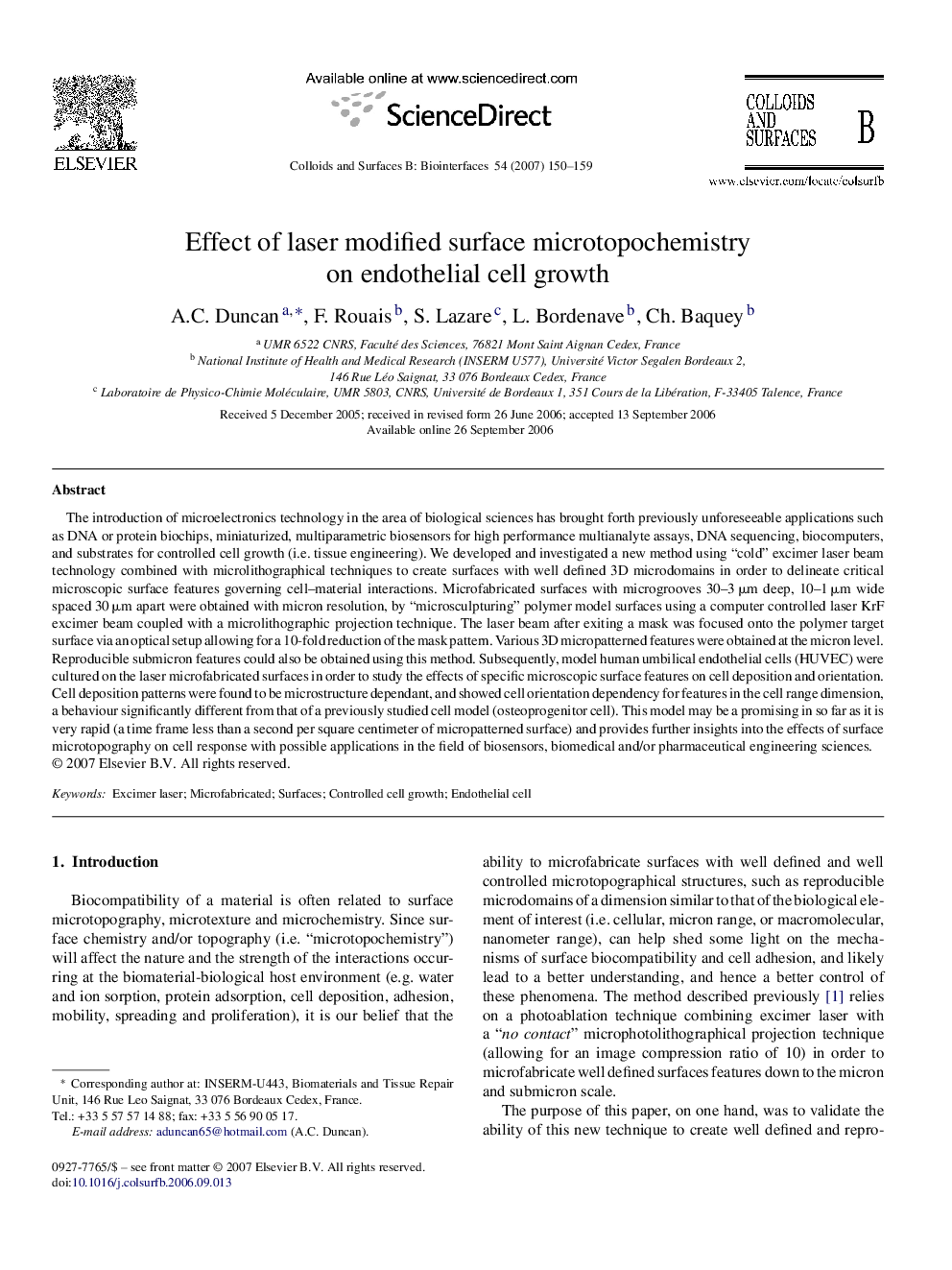| کد مقاله | کد نشریه | سال انتشار | مقاله انگلیسی | نسخه تمام متن |
|---|---|---|---|---|
| 603008 | 880008 | 2007 | 10 صفحه PDF | دانلود رایگان |

The introduction of microelectronics technology in the area of biological sciences has brought forth previously unforeseeable applications such as DNA or protein biochips, miniaturized, multiparametric biosensors for high performance multianalyte assays, DNA sequencing, biocomputers, and substrates for controlled cell growth (i.e. tissue engineering). We developed and investigated a new method using “cold” excimer laser beam technology combined with microlithographical techniques to create surfaces with well defined 3D microdomains in order to delineate critical microscopic surface features governing cell–material interactions. Microfabricated surfaces with microgrooves 30–3 μm deep, 10–1 μm wide spaced 30 μm apart were obtained with micron resolution, by “microsculpturing” polymer model surfaces using a computer controlled laser KrF excimer beam coupled with a microlithographic projection technique. The laser beam after exiting a mask was focused onto the polymer target surface via an optical setup allowing for a 10-fold reduction of the mask pattern. Various 3D micropatterned features were obtained at the micron level. Reproducible submicron features could also be obtained using this method. Subsequently, model human umbilical endothelial cells (HUVEC) were cultured on the laser microfabricated surfaces in order to study the effects of specific microscopic surface features on cell deposition and orientation. Cell deposition patterns were found to be microstructure dependant, and showed cell orientation dependency for features in the cell range dimension, a behaviour significantly different from that of a previously studied cell model (osteoprogenitor cell). This model may be a promising in so far as it is very rapid (a time frame less than a second per square centimeter of micropatterned surface) and provides further insights into the effects of surface microtopography on cell response with possible applications in the field of biosensors, biomedical and/or pharmaceutical engineering sciences.
Journal: Colloids and Surfaces B: Biointerfaces - Volume 54, Issue 2, 15 February 2007, Pages 150–159